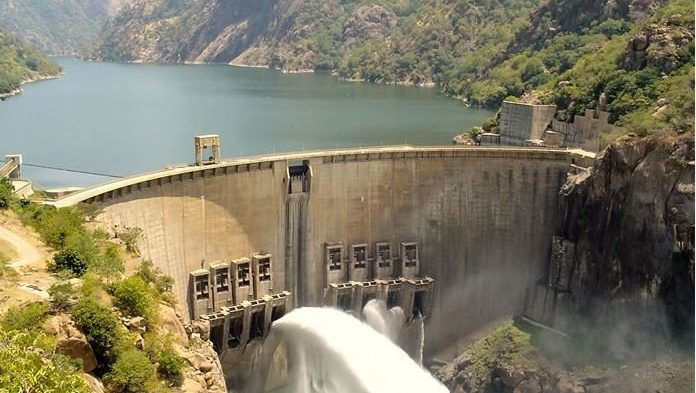Cameroon dam opening: FG and states advise residents at risk of flooding to evacuate to avert fatalities
After massive amounts of water were released from the Lagdo Dam in Camero, states along the River Benue’s route in Nigeria prepared for potential flood disasters.
State governments in the areas most at risk from flooding have issued mandatory evacuation orders in an effort to reduce the number of lives lost and other consequences of flooding.
Adamawa, Taraba, Benue, Nasarawa, Kogi, Anambra, Edo, Delta, Bayelsa, Rivers, and Cross River are only some of the states that might be negatively affected by the dam’s opening, as reported by the National Emergency Management Agency.
On Sunday, the states urged those people to evacuate so that no lives or property would be lost.
The Federal Government was reportedly notified by Cameroon on Sunday that the Lagdo Dam will soon be opened.
Umar Salisu, director of African affairs at the Federal Ministry of Foreign Affairs, wrote on August 21, 2023 that a message on the dam’s opening had been received from the High Commission of Cameroon.
The National Emergency Management Agency was notified in part as follows: “I have the honour to inform that the ministry is in receipt of a Note Verbale from the High Commission of the Republic of Cameroon informing that Cameroonian officials have resolved to open the flood gates of the Lagdo Dam on the Benue River in the days ahead due to the heavy rainfall around the dam catchment area in Northern Cameroon.”
The letter emphasised the importance of noting that, should water release be required, the Lagdo Dam’s authorities would only release a small, varying amount of water at a time to limit any potential harm to the river basins of Cameroon and Nigeria.
In light of the foregoing, it would be greatly appreciated if the respected agency implemented all the necessary preventative measures and efforts to lessen the impact and educate the locals on the need of being alert and taking all the safety precautions they can.
The Lagdo Dam on the Benue River, about 50 kilometres south of the city of Garoua, frequently overflows, causing floods in many states downstream in Nigeria.
Sunday saw confirmation from many states that they would be demolishing structures along rivers in preparation for the dam’s opening, while others set aside classroom space in schools to house those who had been displaced by the flooding.
The inauguration of Lagdo Dam would have an impact on eleven states, according to officials from the National Emergency Management Agency and the Nigeria Hydrological Services Agency.
However, they did specify the states involved, which included Adamawa, Taraba, Benue, Nasarawa, Kogi, Anambra, Edo, Delta, Bayelsa, Rivers, and Cross River, although assuring everyone that there was no need for concern.
Although Clement Nze, Director-General of the Nigeria Hydrological Services Agency, confirmed the letter on behalf of the Nigerian government, he pointed out that the dam had already began releasing water before Cameroon submitted its notification.
Nigeria’s Foreign Affairs Ministry’s African Affairs Officer signed the letter on August 21, 2023. My permanent secretary brought my attention to a news statement from the Adamawa State Government last week on Tuesday.
I called the dam’s manager on a Wednesday and he told me that the gates will open at 10:10 a.m. on August 14, 2023. He estimated that they were losing around 20 million gallons of water each day, or 200 cubic metres every second.
They have been releasing water prior to sending that letter to the foreign affairs ministry to publicly proclaim it. They told me on Friday that they chose to cut the volume they discharge downstream from the previous five million cubic feet per day to 50 cubic metres per second.
Meanwhile, Nze clarified that the dam’s release of water will not affect the states of Niger, Kwara, or Kebbi: “but after reaching River Niger, it will start moving down to Edo, Delta, Anambra, and then to Rivers, Bayelsa, before it enters the Atlantic Ocean.”
He said there was no immediate cause for panic notwithstanding the need of the governors of the affected states making the required preparations since the flow might reach a section of Cross River.
Some of the activities of people on the river banks and along the water channels that might contribute to blocking the drains are being eliminated, said James Iorpuu, acting Executive Secretary of the Benue State Emergency Management Agency.
In an interview, he added, “We have developed designated spots where we would evacuate folks living near the banks of the River Benue and people inhabiting flood-prone regions across the 22 Local Government regions that will be affected by floods.
We have also started a campaign to raise awareness about the importance of evacuating flood-prone locations. We have also had discussions with civil society representatives and traditional leaders on the need of urging people to evacuate flood-prone areas.
In Makurdi town, we are urging people to evacuate the low-lying areas along the riverbanks. Camps for flood victims will be set up in public schools in the 22 local government districts most at risk of flooding.
At risk of flooding include the neighbourhoods of Achusa, Idye, Wurukum Market, Genabe, Industrial Layout, Demekpe, Wadata Market, Rice Mill, Inongun, Agbohough, Judges Quarters, and Gyado Villa, according to research conducted by Iorpuu.
In an effort to alleviate floods, the administration of Nasarawa has decided to remove all buildings situated on waterways in the state’s 13 LGAs.




